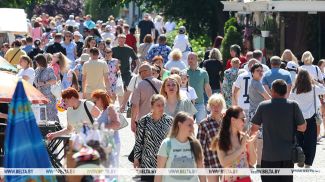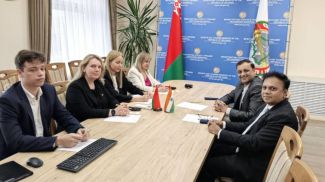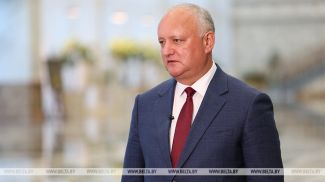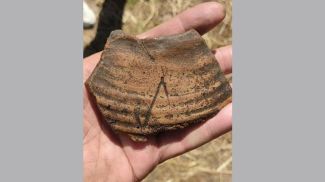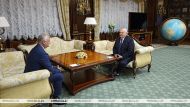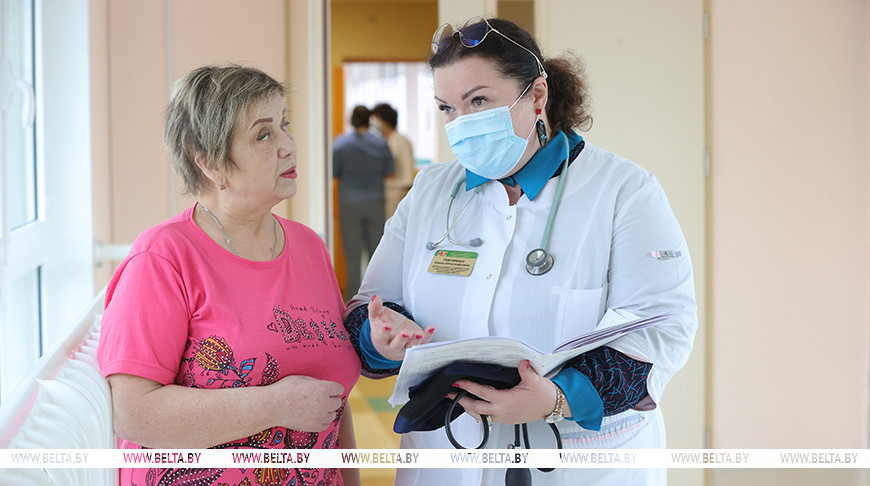
"I insist on CT coronary angiography for you," Yelena Grigorenko, MD and cardiologist with 25 years of experience, said during a consultation with patient Nina Kazak. This decision saved the life of the elderly resident of Minsk, although all other doctors doubted the need for additional examinations at that time. Why "torture" the elderly woman if she complained only of chest pain, which may well happen to an elderly person who had undergone a liver transplant. Today, Yelena Grigorenko recalls that case as one of the prime examples proving the effectiveness of the method she developed. For her part, Nina Kazak, a great-grandmother at 65, dreams of becoming a great-great-grandmother and never tires of thanking the doctor for the possibility to dare such dreams.
Calculator to assess the risks and to manage a waiting list for transplants
It took Yelena Grigorenko more than 15 years to become an established expert in the domestic cardiology and international science. Nowhere in the world there are similar methods to assess the risks of cardiovascular diseases for liver transplant patients in a postoperative period. At the same time, the demand for such innovations is growing from year to year, increasing in direct proportion to the number of people in need of liver transplant. Belarus, by the way, is among the leaders in liver transplant surgeries ranking 22nd in the world and performing 52 liver transplants per 1 million people.
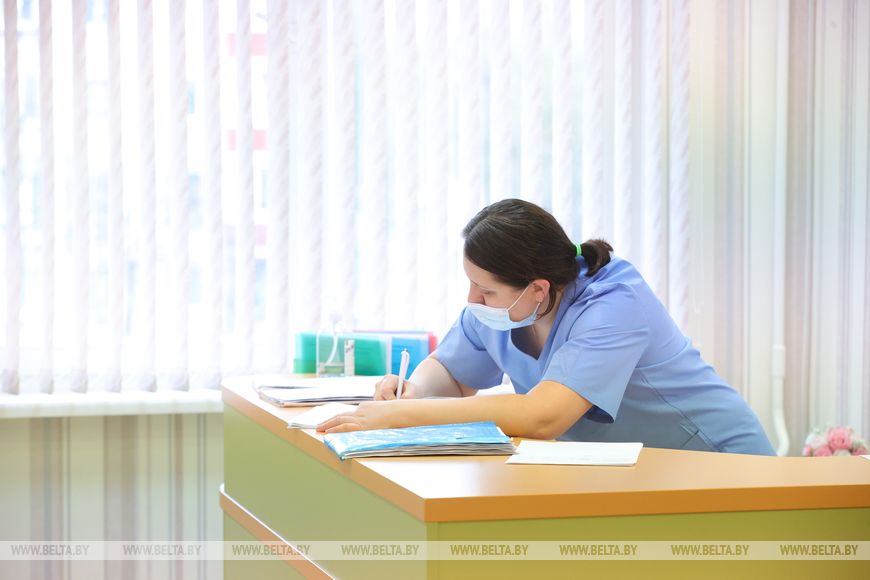
"The first part of my dissertation was devoted to the assessment of the condition of patients with terminal liver disease who are on a waiting list for a transplant. The order of priority depends on the severity of the case, and this is determined with the help of special scoring systems. In the case of liver transplantation, the MELD score is used to predict the survival of a patient in need of surgery. The scale contains such indicators as the level of creatinine, electrolytes and bilirubin in a future recipient, but does not include any criterion that would reflect the state of the cardiovascular system. This is very important," the doctor said.
Belarusian cardiologists solve a major problem
The results of the global multicenter study published in 2018 showed that not all people in need of liver transplant died from liver decompensation. Often, the cause of sudden deaths was not liver pathology, but circulatory diseases: life-threatening arrhythmias, strokes and heart attacks. Researchers called on the world medical community to study this problem - and Belarusian doctors responded.
Work began. Yelena Grigorenko, together with a team of specialists from various fields, has been monitoring patients who have undergone liver transplantation for a decade. Doctors monitored the recipients' cardiovascular health one year, three and five years after surgery and were able to identify key risk factors. Thus, they created a calculator based on special values obtained during the patient's examination, which makes it possible to calculate the patient's cardiovascular risks.
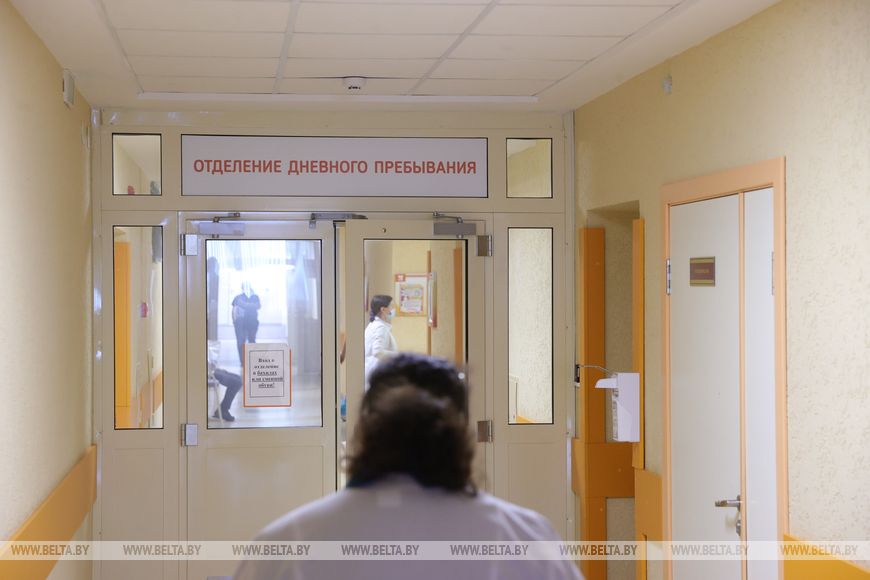
"Patients with a low degree of cardiovascular risk just need to take medicines. But those patients who are in a high risk category cannot do without a more serious treatment. At a certain stage, they need coronary artery stenting, coronary artery bypass grafting and, in general, more aggressive treatment tactics. That was what my work was about: to identify people whom we should help in the first place, and to offer them the most effective ways of medical prevention and treatment,” Yelena Grigorenko said.
The above-mentioned Nina Kazak was among the 840 patients with a donor liver, whose condition was closely monitored by doctors during the study. Although the sample included less than 1,000 recipients, doctors call the Minsk woman’s case one in a million.
“I travel, make TV appearances and dream of becoming a great-great-grandmother”
Yelena Grigorenko introduced us to her patient and asked her to talk to us about her condition and life after the transplant. Nina gladly agreed to a brief interview and said that she felt great, and despite the fact that she was still undergoing rehabilitation, she was trying her best to live an interesting life. Looking at this active, positive and charming woman, we had no doubts that she was enjoying her life.
“I sometimes forget that I have a donor organ. The very memories of the surgery are fading away. It’s just because nothing bothers me, only doctors who regularly examine me,” Nina Kazak said as she laughed. I enjoy being on the move: I do Nordic walking and go to the pool. I spend a lot of time with my grandchildren and great-grandchildren, by the way, I have four grandchildren and four great-grandchildren. My eldest great-grandson went to the 1st grade this year, and I hope that I have my heart beating long enough to become a great-great-grandmother.”
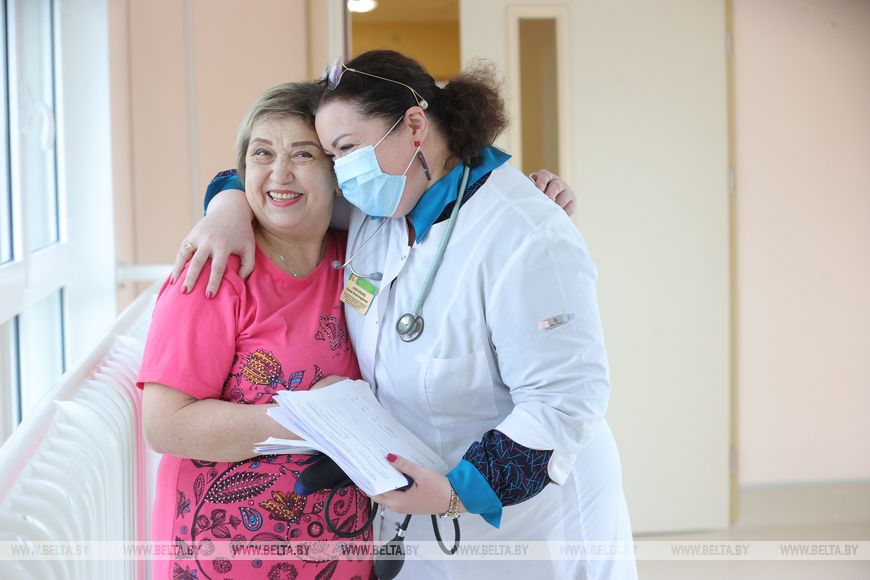
Today, the 65-year-old Minsker is making plans for several years ahead, but when doctors first examined her, they were very cautious in their forecasts, as they did not want to give her a false hope. The surgery split her life into before and after. She remembers that fateful day in detail. The orthotopic liver transplantation was performed on 8 April 2010, and this surgery made Nina Kazak forget about her health problems for a while.
“My sister died of a heart attack – I was bound to repeat that scenario”
That was until the day the pensioner was taken to one of Minsk hospitals with chest pain. Doctors diagnosed her with new-onset angina and prescribed a classic treatment regimen. However, experienced cardiologist Yelena Grigorenko was in doubt.
“I wrote a paper about patients with liver transplants. Although such people may seem alright and may live an active lifestyle, they still have a high risk of cardiovascular diseases. Therefore, I could not but pay attention to this case. The pain was caused by coronary artery atherosclerosis. Such a condition cannot be detected through an electrocardiogram, by interviewing a patient and measuring their blood pressure and pulse. To detect coronary lesions, a comprehensive examination is needed,” said Yelena Grigorenko. In this particular case doctors wasted no time. CT angiography showed significant changes in the patient’s heart vessels. The woman was promptly transferred to a specialized hospital, where she undertook a stent placement and had the blood flow in the heart vessels restored. Doctors prescribed treatment to prevent a heart attack and a stroke in the future.
“On 13 January, I experienced enormous stress and for the first time after the surgery I felt pain in my heart. My sister suddenly died within a day. She had a heart attack, and doctors in Molodechno could not save her. At that moment I realized that if my physicians weren’t attentive and fast enough, the same could have happened to me. But I chose to believe that, thanks to our healthcare, everything would be fine for me,” Nina Kazak said optimistically.
“We can examine the entire heart in a single heartbeat"
Modern diagnostic equipment makes it a lot easier for cardiologists to establish the right diagnosis and choose the right treatment regimen. The unique equipment that doctors of the National Research Center Cardiology have at their disposal includes a 384-slice, dual-source CT scanner. This state-of-the-art technology acquires an image of a heart in a single heartbeat.

“We mainly specialize in coronary artery imaging. We can diagnose coronary artery calcification and atherosclerotic plaques. We can assess the degree of stenosis that requires surgical treatment. We are the only ones in the country to perform stress CT. We can examine up to 20 patients per day. Everything depends on the purpose of examination as determined by the cardiologist,” Tatiana Rusak, head of the X-ray department, said sharing the details of her work.
Buffer between intensive care and hospital
The outcomes of research conducted at the National Research Center Cardiology have resulted in the increased number of emergency hospitalizations. These cases do not often fit into standard clinical protocols. This requires, among other things, further development of the infrastructure of the center. A new hybrid building equipped with high-tech operating rooms was commissioned last year. Intensive care rooms - a kind of buffer between the intensive care unit and the hospital – were also launched. Patients who cannot be transferred to the general clinical department are treated here.

“The cardiac surgery units have 25 beds each, the cardiac therapy units - 30. We have three-bed intensive care wards on each floor. They are equipped to provide highly specialized medical care to cardiology patients. An anesthesiologist-reanimatologist and nursing staff are present in the intensive care rooms round the clock,” Natalia Klyshevich, acting head of the 1st cardiology unit, said.
We peeped into one of these intensive care rooms. Natalia Klyshevich explained that both patients in the ward were in extremely bad condition. One of the men was suffering from myocardial infarction and was being prepared for aortocoronary bypass surgery. The second patient was diagnosed with aortic valve defect and chronic ischemic heart disease. He has already undergone aortic valve replacement and aortocoronary bypass surgery.
“I have been in hospital for almost a month now. The operation went well, but I am 77 and post-surgery recovery is slow. I take tests every day, doctors examine me, scientific staff consult me and periodically change something in the treatment regimen. Thank God, I am getting better and, I think, I will go home soon,” academician-physicist Valentin Orlovich, a patient at the center, said.
“A few days of practice were more useful than the entire therapy course”
Medical students are regular visitors to the center. Education of the future doctors is one of the most important missions of both MDs and the center. Yelena Grigorenko introduced us to several foreign sixth-year students of Belarusian State Medical University.
“We have been here only three days so far, but we have already seen many interesting clinical cases and even participated in a ‘hybrid’ board meeting. We will be supervising a few patients together with a mentor. This is a very useful experience,” said Tachgozel Saparmammedova, a medical student from Turkmenistan.

“We watched CT angiography, visited arrhythmology operating rooms, saw how stress-CT was done. At other departments we studied the treatment process mainly in theory. At the Department of Cardiology and Internal Medicine of Belarusian State Medical University we witnessed a live interaction between a doctor and a patient and already have an idea what kind of patients are referred to here for treatment,” Yekaterina Derkacheva from Russia noted.
Having told a lot, if not everything, about her scientific work and the work of the National Research Center Cardiology, MD, Associate Professor and cardiologist Yelena Grigorenko added that she received the doctoral diploma from the Belarusian president on 26 January and it was the best recognition of her services to Belarusian medicine and science. Yelena Grigorenko is determined to continue her research, because it is her duty to help people.
By Vera Vasilevskaya
Photos by Vitaly Pivovarchik
BelTA
Calculator to assess the risks and to manage a waiting list for transplants
It took Yelena Grigorenko more than 15 years to become an established expert in the domestic cardiology and international science. Nowhere in the world there are similar methods to assess the risks of cardiovascular diseases for liver transplant patients in a postoperative period. At the same time, the demand for such innovations is growing from year to year, increasing in direct proportion to the number of people in need of liver transplant. Belarus, by the way, is among the leaders in liver transplant surgeries ranking 22nd in the world and performing 52 liver transplants per 1 million people.

"The first part of my dissertation was devoted to the assessment of the condition of patients with terminal liver disease who are on a waiting list for a transplant. The order of priority depends on the severity of the case, and this is determined with the help of special scoring systems. In the case of liver transplantation, the MELD score is used to predict the survival of a patient in need of surgery. The scale contains such indicators as the level of creatinine, electrolytes and bilirubin in a future recipient, but does not include any criterion that would reflect the state of the cardiovascular system. This is very important," the doctor said.
Belarusian cardiologists solve a major problem
The results of the global multicenter study published in 2018 showed that not all people in need of liver transplant died from liver decompensation. Often, the cause of sudden deaths was not liver pathology, but circulatory diseases: life-threatening arrhythmias, strokes and heart attacks. Researchers called on the world medical community to study this problem - and Belarusian doctors responded.
Work began. Yelena Grigorenko, together with a team of specialists from various fields, has been monitoring patients who have undergone liver transplantation for a decade. Doctors monitored the recipients' cardiovascular health one year, three and five years after surgery and were able to identify key risk factors. Thus, they created a calculator based on special values obtained during the patient's examination, which makes it possible to calculate the patient's cardiovascular risks.

"Patients with a low degree of cardiovascular risk just need to take medicines. But those patients who are in a high risk category cannot do without a more serious treatment. At a certain stage, they need coronary artery stenting, coronary artery bypass grafting and, in general, more aggressive treatment tactics. That was what my work was about: to identify people whom we should help in the first place, and to offer them the most effective ways of medical prevention and treatment,” Yelena Grigorenko said.
The above-mentioned Nina Kazak was among the 840 patients with a donor liver, whose condition was closely monitored by doctors during the study. Although the sample included less than 1,000 recipients, doctors call the Minsk woman’s case one in a million.
“I travel, make TV appearances and dream of becoming a great-great-grandmother”
Yelena Grigorenko introduced us to her patient and asked her to talk to us about her condition and life after the transplant. Nina gladly agreed to a brief interview and said that she felt great, and despite the fact that she was still undergoing rehabilitation, she was trying her best to live an interesting life. Looking at this active, positive and charming woman, we had no doubts that she was enjoying her life.
“I sometimes forget that I have a donor organ. The very memories of the surgery are fading away. It’s just because nothing bothers me, only doctors who regularly examine me,” Nina Kazak said as she laughed. I enjoy being on the move: I do Nordic walking and go to the pool. I spend a lot of time with my grandchildren and great-grandchildren, by the way, I have four grandchildren and four great-grandchildren. My eldest great-grandson went to the 1st grade this year, and I hope that I have my heart beating long enough to become a great-great-grandmother.”

Today, the 65-year-old Minsker is making plans for several years ahead, but when doctors first examined her, they were very cautious in their forecasts, as they did not want to give her a false hope. The surgery split her life into before and after. She remembers that fateful day in detail. The orthotopic liver transplantation was performed on 8 April 2010, and this surgery made Nina Kazak forget about her health problems for a while.
“My sister died of a heart attack – I was bound to repeat that scenario”
That was until the day the pensioner was taken to one of Minsk hospitals with chest pain. Doctors diagnosed her with new-onset angina and prescribed a classic treatment regimen. However, experienced cardiologist Yelena Grigorenko was in doubt.
“I wrote a paper about patients with liver transplants. Although such people may seem alright and may live an active lifestyle, they still have a high risk of cardiovascular diseases. Therefore, I could not but pay attention to this case. The pain was caused by coronary artery atherosclerosis. Such a condition cannot be detected through an electrocardiogram, by interviewing a patient and measuring their blood pressure and pulse. To detect coronary lesions, a comprehensive examination is needed,” said Yelena Grigorenko. In this particular case doctors wasted no time. CT angiography showed significant changes in the patient’s heart vessels. The woman was promptly transferred to a specialized hospital, where she undertook a stent placement and had the blood flow in the heart vessels restored. Doctors prescribed treatment to prevent a heart attack and a stroke in the future.
“On 13 January, I experienced enormous stress and for the first time after the surgery I felt pain in my heart. My sister suddenly died within a day. She had a heart attack, and doctors in Molodechno could not save her. At that moment I realized that if my physicians weren’t attentive and fast enough, the same could have happened to me. But I chose to believe that, thanks to our healthcare, everything would be fine for me,” Nina Kazak said optimistically.
“We can examine the entire heart in a single heartbeat"
Modern diagnostic equipment makes it a lot easier for cardiologists to establish the right diagnosis and choose the right treatment regimen. The unique equipment that doctors of the National Research Center Cardiology have at their disposal includes a 384-slice, dual-source CT scanner. This state-of-the-art technology acquires an image of a heart in a single heartbeat.

“We mainly specialize in coronary artery imaging. We can diagnose coronary artery calcification and atherosclerotic plaques. We can assess the degree of stenosis that requires surgical treatment. We are the only ones in the country to perform stress CT. We can examine up to 20 patients per day. Everything depends on the purpose of examination as determined by the cardiologist,” Tatiana Rusak, head of the X-ray department, said sharing the details of her work.
Buffer between intensive care and hospital
The outcomes of research conducted at the National Research Center Cardiology have resulted in the increased number of emergency hospitalizations. These cases do not often fit into standard clinical protocols. This requires, among other things, further development of the infrastructure of the center. A new hybrid building equipped with high-tech operating rooms was commissioned last year. Intensive care rooms - a kind of buffer between the intensive care unit and the hospital – were also launched. Patients who cannot be transferred to the general clinical department are treated here.

“The cardiac surgery units have 25 beds each, the cardiac therapy units - 30. We have three-bed intensive care wards on each floor. They are equipped to provide highly specialized medical care to cardiology patients. An anesthesiologist-reanimatologist and nursing staff are present in the intensive care rooms round the clock,” Natalia Klyshevich, acting head of the 1st cardiology unit, said.
We peeped into one of these intensive care rooms. Natalia Klyshevich explained that both patients in the ward were in extremely bad condition. One of the men was suffering from myocardial infarction and was being prepared for aortocoronary bypass surgery. The second patient was diagnosed with aortic valve defect and chronic ischemic heart disease. He has already undergone aortic valve replacement and aortocoronary bypass surgery.
“I have been in hospital for almost a month now. The operation went well, but I am 77 and post-surgery recovery is slow. I take tests every day, doctors examine me, scientific staff consult me and periodically change something in the treatment regimen. Thank God, I am getting better and, I think, I will go home soon,” academician-physicist Valentin Orlovich, a patient at the center, said.
“A few days of practice were more useful than the entire therapy course”
Medical students are regular visitors to the center. Education of the future doctors is one of the most important missions of both MDs and the center. Yelena Grigorenko introduced us to several foreign sixth-year students of Belarusian State Medical University.
“We have been here only three days so far, but we have already seen many interesting clinical cases and even participated in a ‘hybrid’ board meeting. We will be supervising a few patients together with a mentor. This is a very useful experience,” said Tachgozel Saparmammedova, a medical student from Turkmenistan.

“We watched CT angiography, visited arrhythmology operating rooms, saw how stress-CT was done. At other departments we studied the treatment process mainly in theory. At the Department of Cardiology and Internal Medicine of Belarusian State Medical University we witnessed a live interaction between a doctor and a patient and already have an idea what kind of patients are referred to here for treatment,” Yekaterina Derkacheva from Russia noted.
Having told a lot, if not everything, about her scientific work and the work of the National Research Center Cardiology, MD, Associate Professor and cardiologist Yelena Grigorenko added that she received the doctoral diploma from the Belarusian president on 26 January and it was the best recognition of her services to Belarusian medicine and science. Yelena Grigorenko is determined to continue her research, because it is her duty to help people.
By Vera Vasilevskaya
Photos by Vitaly Pivovarchik
BelTA




